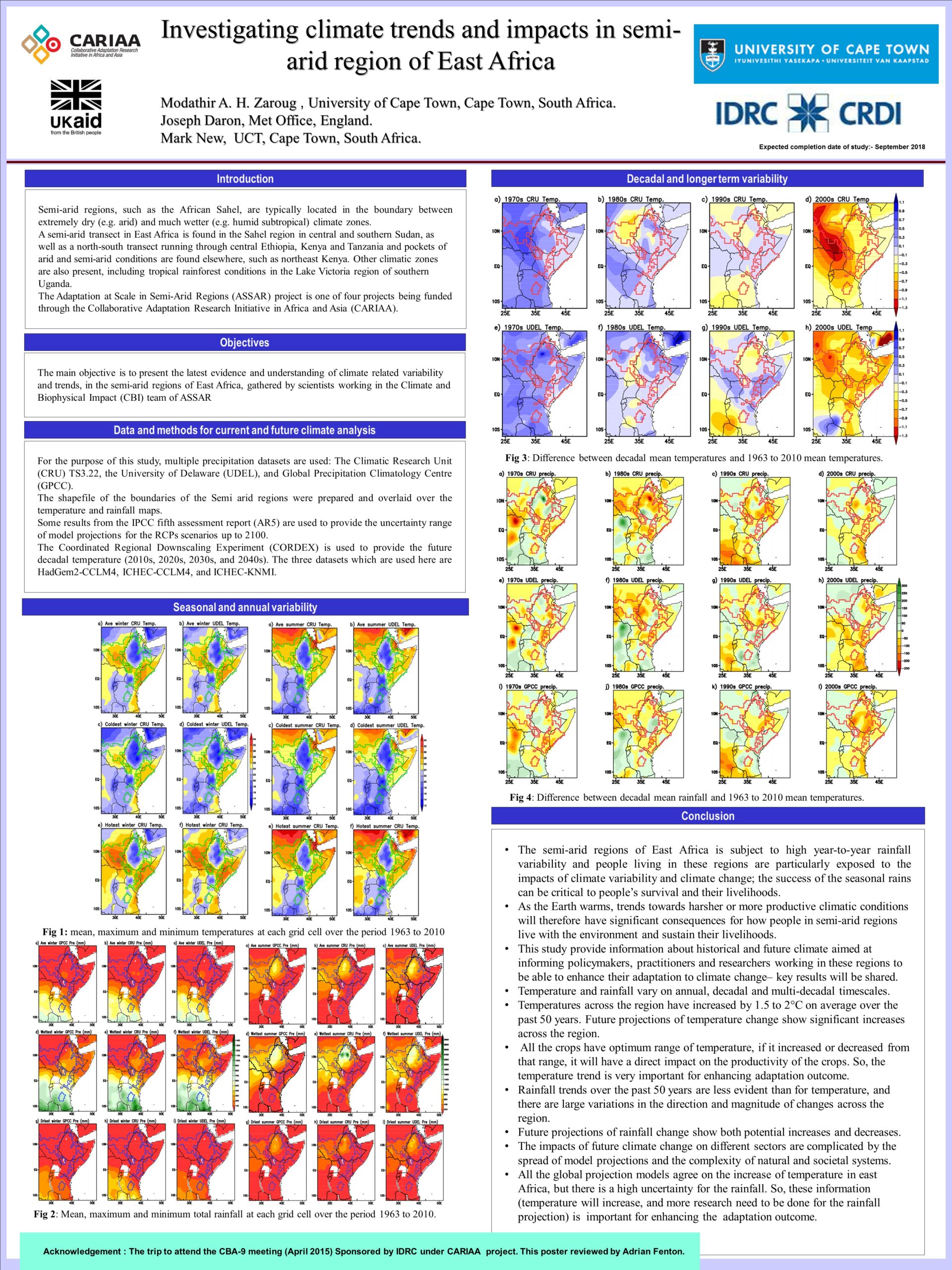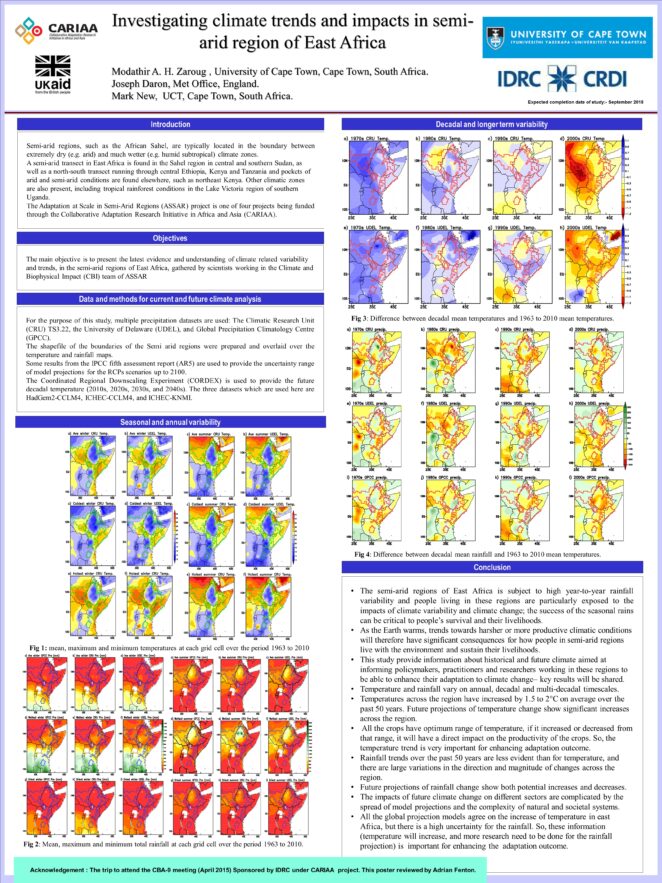Investigating Climate Trends and Impacts in Semi-Arid Regions of East Africa


Click to enlarge.
The 9th International Conference on Community-Based Adaptation (CBA9) took place in Nairobi, Kenya, from April 24-30 2015. The CBA series of conferences focus on the latest developments in community-based adaptation to climate change. The theme of this year’s event was “Measuring and enhancing effective adaptation”, and all the posters presented at the conference were summaries of projects related to the conference theme. This poster is one of the posters featured at the conference. For more information about CBA9, visit: www.cba9.org. If you want to learn more about community based adaptation, please visit the GICBA platform on weADAPT.
Introduction:
Semi-arid regions, such as the African Sahel, are typically located in the boundary between extremely dry (e.g. arid) and much wetter (e.g. humid subtropical) climate zones.
A semi-arid transect in East Africa is found in the Sahel region in central and southern Sudan, as well as a north-south transect running through central Ethiopia, Kenya and Tanzania and pockets of arid and semi-arid conditions are found elsewhere, such as northeast Kenya. Other climatic zones are also present, including tropical rainforest conditions in the Lake Victoria region of southern Uganda.
The Adaptation at Scale in Semi-Arid Regions (ASSAR) project is one of four projects being funded through the Collaborative Adaptation Research Initiative in Africa and Asia (CARIAA).
Contact:
This poster was produced by Modathir A. H Zaroug, University of Cape Town, South Africa.
(0) Comments
There is no content